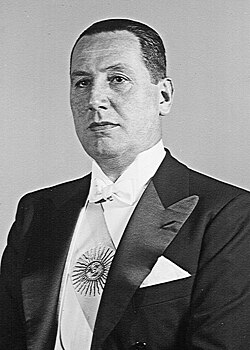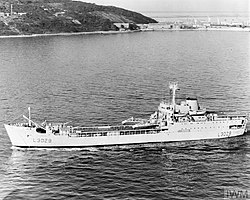
The military dictatorship of Argentina refers to the government of Argentina between 1976 and 1983, one which termed itself the National Reorganization Process, headed first by Jorge Rafael Videla. The military junta was hardly unusual for this part of the world at the time and many South American countries experienced right-wing military dictatorships in the 1960s, 1970s and 1980s. In Argentina’s case the dictatorship came about owing to perennial economic and political crises that had been occurring since the late 1920s. It became extremely repressive, reining in political freedoms, ‘disappearing’ many Argentine citizens and participating in Operation Condor with the United States and its South American neighbors. The regime is also notable for launching the Falklands War with Britain, the loss of which helped bring about the junta's eventual demise in 1983. The years of the dictatorship saw many people flee from Argentina to avoid political persecution and much of the Argentine diaspora dates to this era.[1]
Military dictatorship of Argentina chronology of eventsMilitary dictatorship of Argentina chronology of events
It is difficult to remember it today, after nearly an entire century of economic and political crises there, but back in the early twentieth century Argentina was one of the most promising countries in the world. Mass-migration from the 1860s onwards and economic development had made it the United States of South America and Buenos Aires the New York of the southern hemisphere. By the end of the 1920s this was the twelfth richest country in the world, ahead of the likes of Canada, Spain and Australia. And then it all came crashing down. Argentina never recovered from the Wall Street Crash and the Great Depression that followed. A combination of US economic imperialism, dysfunctional internal politics and fiscal instability combined to see Argentina lurch from crisis to crisis decade after decade. In many ways it remains mired in these cycles even today a century later.[2]

Various political experiments and movements emerged in Argentina over the decades to try and redress the country’s problems. The most notable such political movement was that associated with Juan Perón, the long-serving president of the country, firstly from 1946 to 1955 and then again briefly before his death in 1974. Perónism was a peculiar mix of left and right-wing policies, with its approach to Argentine economics being socialist in some sense and other elements of it being more conservative and right-wing. The military junta which seized power in Argentina in a coup in March 1976 was essentially responding to both Argentina’s long-running economic and political problems and to Perónism, as Juan’s wife, Isabel Perón, had succeeded him as president in 1974.[3]
The military junta was ruled by a rotating triumvirate of the heads of the armed forces, the air-force and the navy. There were four presidents during its nearly eight years in power, Jorge Rafael Videla, Roberto Eduardo Viola, Leopoldo Galtieri and Reynaldo Bignone.[4] None of these were benign figures. They engaged in what is known to Argentine historians as the Dirty War, a campaign of systematic persecution of Perónists and perceived opponents of the regime. Tens of thousands of people were arrested on flimsy charges. Many disappeared, never to be seen again. Furthermore, along with the dictator of neighboring Chile, Augusto Pinochet, the junta established Operation Condor, a secret initiative between Argentina, Chile and other military regimes of South America to act in unison to crackdown on their own citizens. At its worst Operation Condor involved placing political opponents into airplanes which were then flown over the Atlantic and Pacific where the victims were thrown out of the plane in mid-air. As many as 30,000 Argentines died during the Dirty War.[5]

The Argentine dictatorship tried to legitimize its actions by claiming that repressive measures were need to take the hard decisions that would fix the Argentine economy. The junta, though, proved itself incapable of addressing the problems it claimed it would fix and in the course of the early 1980s the economic situation continued to deteriorate, with the regime having to intervene to prevent the collapse of the banking sector after Banco de Intercambio Regional failed in March 1980.[6] This was compounded by the disastrous decision by Leopoldo Galtieri to invade the Falkland Islands, believing that he could shore up support for the dictatorship through a short, victorious war. The prime minister of Britain, Margaret Thatcher, had other ideas and Britain won a short war in the South Atlantic in the late spring and early summer of 1982. In the months that followed mass-protests broke out across Argentina and in late 1983 the junta eventually agreed to relinquish power.[7]
Extent of migration during the military dictatorship of ArgentinaExtent of migration during the military dictatorship of Argentina
The years of the military dictatorship witnessed some of the most extensive migration from Argentina in its history. Typically this had been a country which was used to inward migration, not outward. Emigration from the country increased between 1976 and 1983. Unusually, people did not tend to flee directly over the border to Chile, Uruguay, Brazil or Paraguay, in large part because these nations typically were co-operating with the junta through Operation Condor. Instead many Argentines headed further afield, above all to the United States, though many made their way to Europe and Spain in particular. The exact migration levels are unknown and not well-recorded, but some estimates suggest as many as quarter of a million Argentines left the country during the era of the military junta.[8]
Demographic impact of the military dictatorship of ArgentinaDemographic impact of the military dictatorship of Argentina
The demographic impact of this migration was felt most keenly in the United States. In 1970 there were just over 40,000 people living in America from Argentina. By 1990 that number had more than doubled to approximately 92,000. Of these, over half headed to Miami, New York or Los Angeles. This laid the basis for a growing Argentine American community in the US in recent times. Some studies estimate that the Argentine American community stands at nearly 300,000 people today. Of these, a very significant proportion will be able to trace their Argentine ancestry back to people who left Argentina between 1976 and 1983 as a result of the military dictatorship.[8]
See alsoSee also
Explore more about the military dictatorship of ArgentinaExplore more about the military dictatorship of Argentina
- Argentina, Baptisms, 1645-1930 record collection on MyHeritage
- Research Latin America Genealogical Resources on the Internet at Legacy Family Tree Webinars
- Spanish & Latin American Records on MyHeritage at Legacy Family Tree Webinars
- After 28 Years of Searching, I Solved a Lifelong Mystery and Found My Brother with MyHeritage DNA at the MyHeritage blog
References
- ↑ Argentina’s Dictatorship Was Not a “Dirty War.” It Was State Terrorism
- ↑ R. Spruk, ‘The rise and fall of Argentina’, in Latin American Economic Review, Vol. 28, No. 16 (2019).
- ↑ E. Spencer Wellhofer, ‘Peronism in Argentina: The Social Base of the First Regime, 1946–1955’, in The Journal of Developing Areas, Vol. 11, No. 3 (April, 1977), pp. 335–356.
- ↑ II. BACKGROUND. Human Rights Watch
- ↑ 30,000 People Were ‘Disappeared’ in Argentina’s Dirty War. These Women Never Stopped Looking. History Channel
- ↑ 2 The Argentine Banking Crisis of 1980. IMF eLibrary
- ↑ The British Army and the Falklands War. National Army Museum
- ↑ 8.0 8.1 Argentinean americans Everyculture


